Tom's Hardware Verdict
The Ryzen 7 Pro 4750G offers a compelling blend of high-powered integrated graphics and eight CPU cores with sixteen threads. The chip will surely be a hit in the pre-built OEM markets, but its lack of retail availability will limit uptake for enthusiasts and DIY'ers.
Pros
- +
Fastest integrated graphics available
- +
Vastly improved single- and multi-threaded performance for APUs
- +
Excellent power consumption and efficiency
- +
Substantial CPU, GPU and memory overclocking capabilities
- +
Passable 1080p, solid 720p gaming
- +
Solder TIM
Cons
- -
"OEM-only"
- -
Comparatively high pricing for grey-market chips
- -
Questionable warranty if bought via grey market
Why you can trust Tom's Hardware
AMD's Ryzen 7 Pro 4750G "Renoir" desktop APU brings eight Zen 2 cores and 16 threads paired with a reworked Radeon RX Vega graphics engine to the mainstream desktop, breaking the old ceiling of four cores and eight threads found with the company's previous-gen "Picasso" APUs. AMD claims the new 7nm chips offer up to a 25% increase in single-threaded performance and up to a 2.5X increase in multi-threaded applications over the prior-gen Picasso APUs. That type of performance would normally make Renoir a shoe-in for our list of Best CPUs – but there's a catch.
To the disappointment of enthusiasts and DIY'ers everywhere, AMD chose to target the pre-built OEM and SI system market with its desktop Renoir chips. The Renoir desktop APUs come in both typical consumer models and specialized 'Pro' variants for professional users, but they are functionally the same silicon and the various models have exactly the same specifications.
Unfortunately, you won't find either family at normal retail outlets, but the grey market is a busy place. Distributors have already begun selling some of the models to the general public, and we snagged an eight-core Ryzen 7 Pro 4750G. This is nearly a carbon copy of the consumer-focused Ryzen 7 4700G, and it will let us see what the "OEM-only" chips bring to the table in gaming and application performance.
| CPU | Cores/Threads | Frequency (Up to) Boost / Base | Graphics Cores | Graphics Frequency | TDP | L3 Cache |
| Ryzen 7 4700G | 8 / 16 | 3.6 / 4.4 | RX Vega 8 | 2100 MHz | 65W | 8 MB |
| Ryzen 7 Pro 4750G | 8 / 16 | 3.6 / 4.4 | RX Vega 8 | 2100 MHz | 65W | 8 MB |
| Ryzen 7 4700GE | 8 / 16 | 3.1 / 4.3 | RX Vega 8 | 2000 MHz | 35W | 8 MB |
| Ryzen 5 4600G | 6 / 12 | 3.7 / 4.2 | RX Vega 7 | 1900 MHz | 65W | 8 MB |
| Ryzen 5 Pro 4650G | 6 / 12 | 3.7 / 4.2 | RX Vega 7 | 1900 MHz | 65W | 8 MB |
| Ryzen 5 4600GE | 6 / 12 | 3.3 / 4.2 | RX Vega 7 | 1900 MHz | 35W | 8 MB |
| Ryzen 3 4300G | 4 / 8 | 3.8 / 4.0 | RX Vega 6 | 1700 MHz | 65W | 4 MB |
| Ryzen 3 Pro 4350G | 4 / 8 | 3.8 / 4.0 | RX Vega 6 | 1700 MHz | 65W | 4 MB |
| Ryzen 3 4300GE | 4 / 8 | 3.5 / 4.0 | RX Vega 6 | 1700 MHz | 35W | 4 MB |
The Renoir lineup consists of six non-Pro models for the consumer market, with three 65W models leading the charge in the Ryzen 7, 5, and 3 families. Each chip also comes with a lower-power 35W "GE" variant for thermally-constrained and small form factor builds. Six corresponding Ryzen Pro models come with the same specifications as the consumer variants, including clock speeds, TDP, cache, and graphics cores/clocks.
The Pro models come with a few added professional-level features, like support for encrypted memory and fTPM, among other features that we'll cover below. However, disabling those features on the Ryzen 7 Pro 4750G allows us to see how the consumer-oriented Ryzen 7 4700G will perform in all of the relevant areas, like gaming, application performance, and power consumption. The 4700G is essentially the same chip with some features either fused off or disabled, and like the 4750G, it also doesn't come with the fancy packaging and bundled cooler we expect with retail chips (although there are ad-hoc bundles listed in some regions).
Enthusiasts won't have to wait forever for new APUs that will come through retail outlets: AMD says it will deliver unspecified next-gen APUs for the DIY market (400- and 500-series motherboards) at an undetermined time. For now, let's see what the OEM-exclusive chip looks like in our performance tests.
Ryzen 4000 'Renoir' Series Specifications
AMD has a staggered naming convention and release cadence for APUs compared to its standard desktop processors, which can be confusing. The Ryzen 4000 "Renoir" lineup of desktop APUs come with the Zen 2 microarchitecture and the 7nm process, just like their Ryzen 3000 series desktop CPU counterparts, but with the notable addition of the Radeon RX Vega graphics engine. Meanwhile, desktop Ryzen "Vermeer" models will come with the 7nm process and Zen 3 microarchitecture in the near future (AMD says we'll see the first Zen 3 consumer chips by the end of the year), and if AMD follows its existing pattern those will also be Ryzen 4000 series.
Get Tom's Hardware's best news and in-depth reviews, straight to your inbox.
The desktop Renoir models drop into 500-series motherboards, but the chips aren't backward-compatible with 400-series motherboards. AMD's OEM partners will likely use custom motherboards, while system integrators typically use standard off-the-shelf consumer motherboards. In that vein, all the major motherboard makers, like MSI, Asus, Gigabyte, and ASRock, have added support for Renoir APUs.
You can tune the Pro series on standard mainstream desktop 500-series chipsets that support overclocking (X- and B-series), but professional chipsets tend to limit overclocking. We tested with standard desktop motherboards, so we turned the knobs on MSI and Asus motherboards with impressive results (deep dive on the following page). The chips also work with AMD's standard Adrenalin graphics drivers.
| CPU | Cores/Threads | Frequency (Up to) Boost / Base | Graphics Cores | Graphics Frequency | TDP | L3 Cache |
| Ryzen 7 4700G | 8 / 16 | 3.6 / 4.4 | RX Vega 8 | 2100 MHz | 65W | 8 MB |
| Ryzen 7 Pro 4750G | 8 / 16 | 3.6 / 4.4 | RX Vega 8 | 2100 MHz | 65W | 8 MB |
| Core i7-10700 | 8 / 16 | 2.9 / 4.8 | UHD 630 | 1200 MHz | 65W | 16 MB |
| Ryzen 7 3800X | 8 / 16 | 3.9 / 4.5 | N/A | N/A | 105W | 32 MB |
| Ryzen 5 4600G | 6 / 12 | 3.7 / 4.2 | RX Vega 7 | 1900 MHz | 65W | 8 MB |
| Ryzen 5 Pro 4650G | 6 / 12 | 3.7 / 4.2 | RX Vega 7 | 1900 MHz | 65W | 8 MB |
| Intel Core i5-10500 | 6 / 12 | 3.1 / 4.5 | UHD 630 | 1150 Mhz | 65W | 12 MB |
| Ryzen 5 3400G | 4 / 8 | 3.7 / 4.2 | RX Vega 11 | 1400 MHz | 95W | 4 MB |
With Renoir, AMD added Ryzen 7 models to the APU lineup for the first time. The halo eight-core 16-thread 4700G/4750G marks a new maximum core count for AMD's APUs and comes with a 3.6 GHz base and 4.4 GHz boost clock. The new six-core 12-thread Ryzen 5 4600G surpasses the previous-gen quad-core eight-thread Ryzen 5 3400G in terms of cores and threads, but matches its predecessor's 3.7 / 4.2 GHz base/boost. The Ryzen 3 4300G rounds out the 65W Ryzen 4000 G-series family with four cores and eight threads that operate at a base/boost of 3.8 / 4.0 GHz.
The G-Series chips use the same monolithic die and architecture as the Ryzen 4000 H-Series laptop chips, with the primary differences between the two families being TDP, tuning, and a PGA interface for the desktop chips (laptop models are BGA-mounted). AMD's 7nm Renoir die comes with 9.8 billion transistors fabbed on TSMC's N7, nearly twice the number of transistors found in the previous-gen Picasso chips, packed into a 156mm2 die that is 25% smaller than Picasso.
The laptop models have to adhere to a strict power and thermal envelope to both conserve battery life and fit within thin devices, and AMD has developed a whole series of technologies to support those objectives. The H-Series laptop chips employ features like DPTC, APML, STAPM, and STT v2 (all outlined in the album below), to enable smarter boosts and dynamic power allocation.



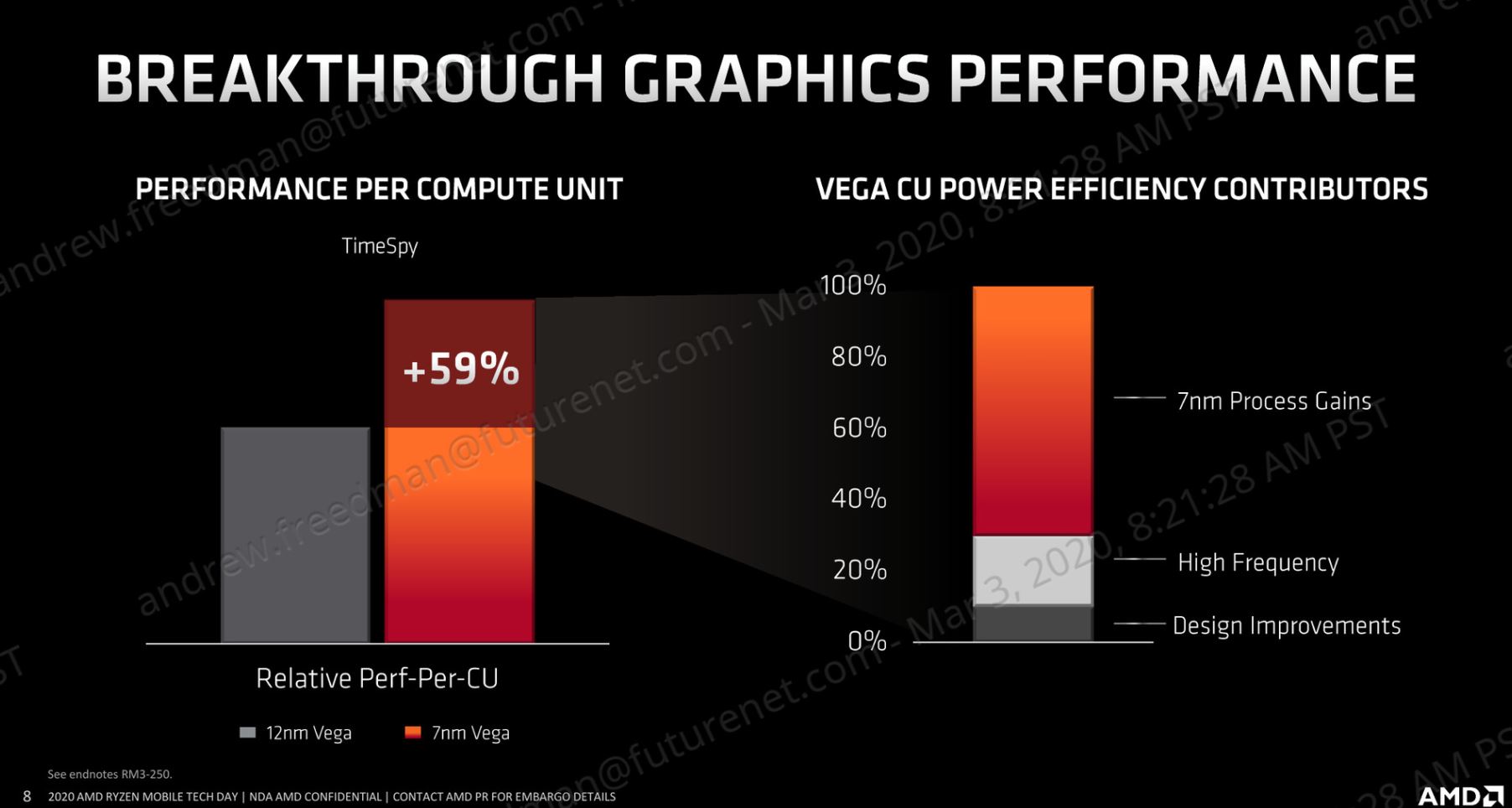
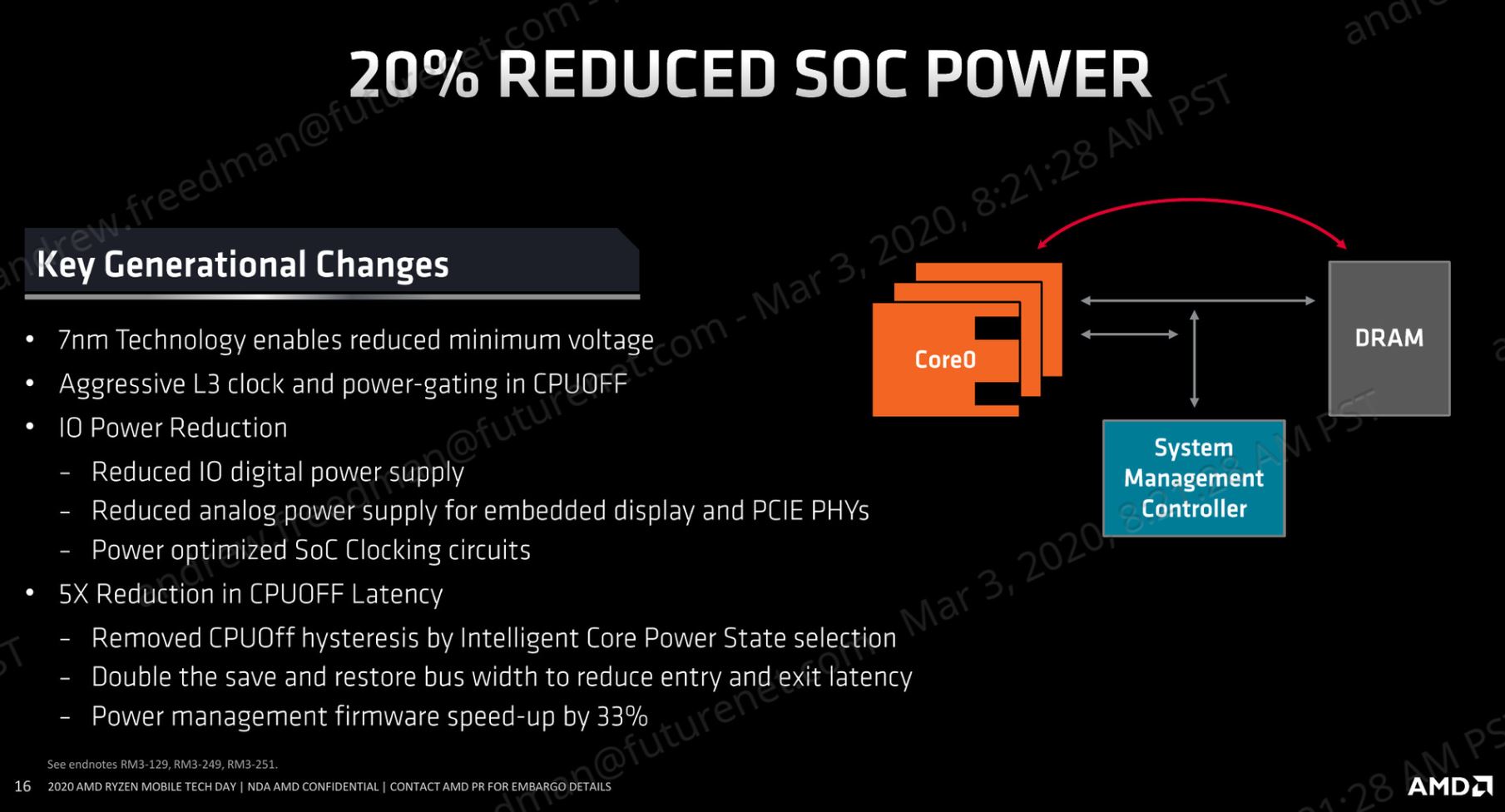
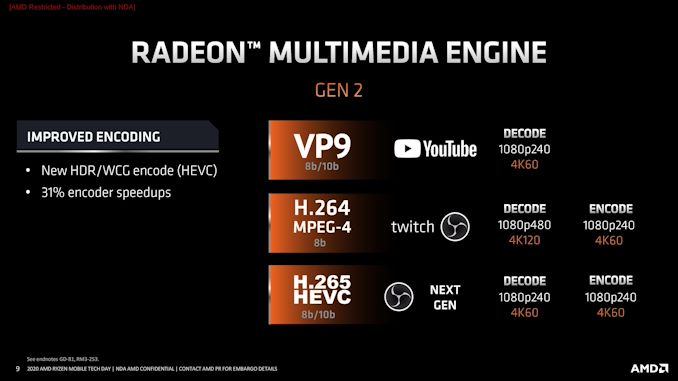
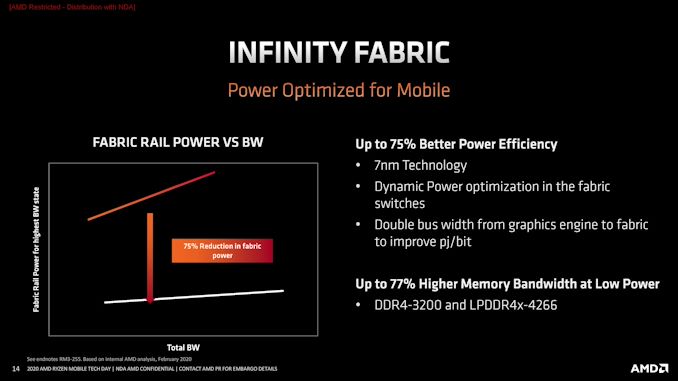

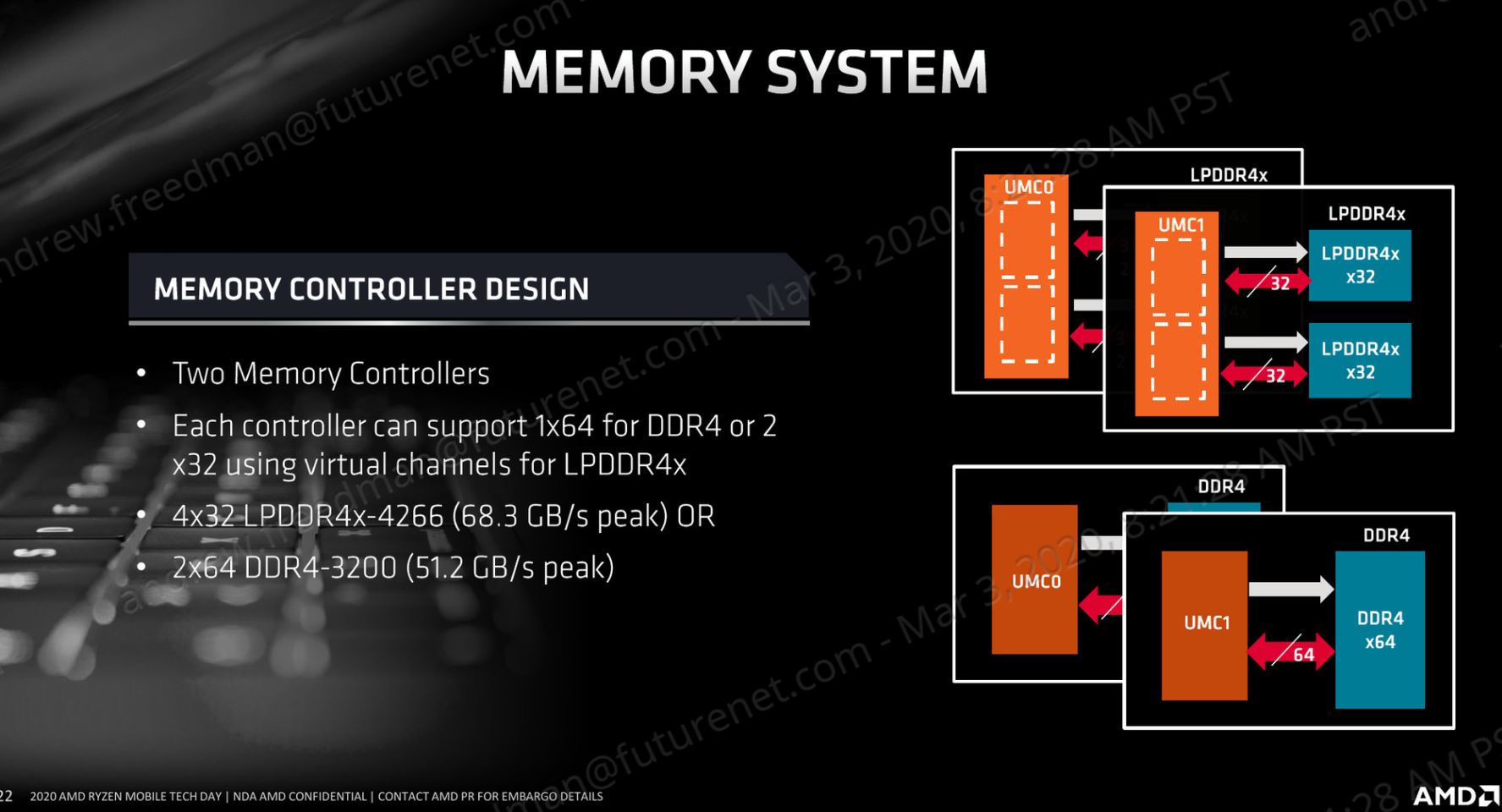
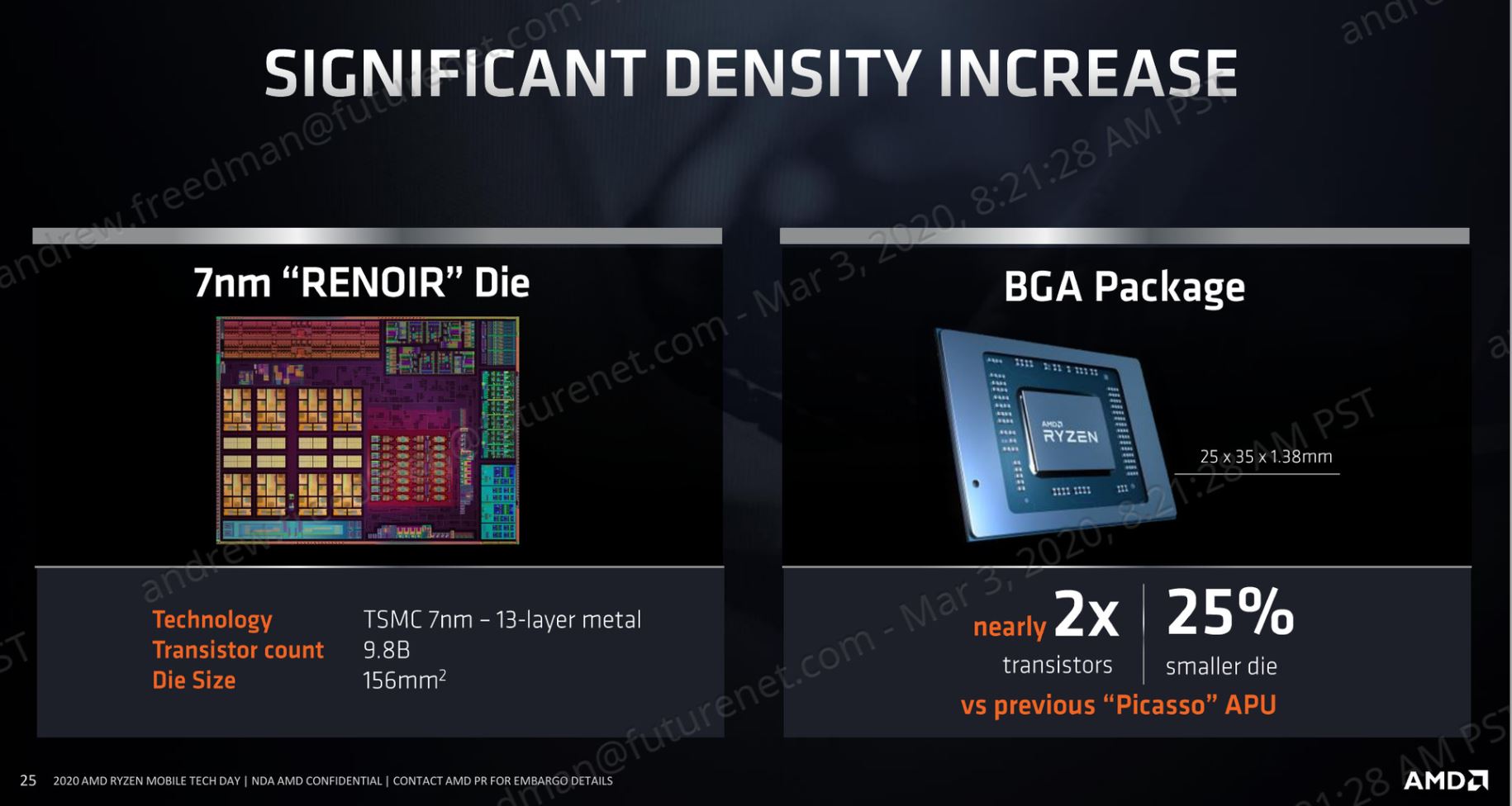
The desktop Renoir APUs aren't constrained by many of those power-saving features. Instead, the 65W chips employ the standard Precision Boost 2 algorithms that we're used to from the Ryzen 3000 desktop chips. As with AMD's other chips, the 65W TDP desktop APUs adhere to a maximum 88W Package Power Tracking (PPT) ceiling, meaning they can pull a maximum of 88W from the socket at stock settings. That means the APU has to balance power between the graphics and execution cores based upon the workload, as you'll see on the following page. As expected, overclocking removes those limits.
The 65W 4700G/4750G chips, which are unofficially listed for $309, compete with Intel's $323 Core i7-10700 that comes with eight cores and 16 threads. The biggest difference between the Core i7-10700 and the 4700G/4750G boils down to integrated graphics. The 10700 comes equipped with Intel's generally lackluster UHD Graphics 630 engine, while the Renoir model features much faster RX Vega cores.
AMD chose to stick with the Vega graphics engine found in its previous-gen Picasso APUs because it hasn't optimized Navi for mobile yet. Still, the company made several architectural enhancements when it ported Vega from the 12nm to the 7nm node. The 4000 series models come with fewer Vega CUs than their predecessors - the Ryzen 7 4700G/4750G comes armed with 'only' eight CUs (512 ALUs) compared to the Ryzen 5 3400G's eleven CUs. AMD also increased the graphics clock up to 2100 MHz for the Ryzen 7 Renoir models, a big increase over Picasso's peak of 1400 MHz, and added support for the HDR/WCG encode engine (HEVC), yielding a 31% performance improvement in encoding.
AMD claims it wrung out ~60% more performance per Vega CU (as measured in Time Strike) for its H-Series laptop chips that use the same die. That improvement comes as a byproduct of the increased peak graphics clock (50% increase for desktop APUs) and more memory throughput. Picasso supported two channels of DDR4-2933, but Renoir brings that up to DDR4-3200 (peak frequency varies based on DIMM population and rank).
The Renoir APUs have two integrated memory controllers, with each supporting 1x64 for DDR4 and 2x32 through virtual channels for LPDDR4x memory. The integrated memory controller on the mobile APUs supports LPDDR4x-4266, and while the desktop APUs could technically address LPDDR4x as well, AMD doesn't actively support the feature. However, both Renoir variants use identical memory controllers, so the support for faster transfer speeds likely contributes to Renoir's incredible memory overclocking prowess (we easily reached DDR4-4000 in 1:1 mode, and speeds beyond DDR4-5000 are possible).
AMD's 7nm Ryzen models generally have much lower power consumption than Intel's competing chips, and that should be amplified with the desktop APUs because all of the components, including the graphics, PCIe and memory controllers, are integrated into a single die. That means they don't need the the 12nm I/O die like the chiplet-based Ryzen 3000 CPU models.
For instance, the 4750G matches the 105W Ryzen 7 3800X's core counts, but does so with a single monolithic 7nm die. Meanwhile, the 3800X is a chiplet-based design with one 7nm compute die (CCD) with processing cores and one 12nm I/O die that houses the memory and PCIe controllers, among other functions. Renoir's monolithic die does come with a trade-off, though: AMD had to make room for the Vega graphics engine. The Ryzen 7 Pro 4750G comes with only 8MB of L3 cache, while the 3800X comes armed with 32MB of L3 cache. Renoir's reduced cache capacity certainly has an impact on gaming performance because it requires more trips to main memory to fetch data, which we'll cover in our gaming testing.
The Renoir desktop APUs support a PCIe 3.0 x16 connection to the PEG slot, a x4 connection to the chipset, and a x4 connection to a storage device (M.2). Unlike the standard Zen 2 desktop models that support the PCIe 4.0 interface, AMD says it stuck with PCIe 3.0 for desktop APUs because it had already baked the interface into the mobile chips to meet the lower power thresholds in notebooks. In contrast, the mobile chips only support eight lanes of PCIe 3.0 for a graphics card, which helps save on power consumption.
Our chip comes from the Pro lineup, so it has many of the professional-centric features found in AMD's Pro Technologies suite. That includes multiple layers of security, including AMD memory guard that enables fully encrypted memory and support for firmware TPM (fTPM) that eliminates the need for physical FPM keys. The manageability suite includes tools for simplified deployments, long-term imaging (via stable drivers), extended software stability (18 months), and long-term availability of the chips (two years).
Let's see how the chip fare in gaming and applications.
Current page: Zen 2 and 7nm APUs Land on the Desktop
Next Page AMD Ryzen 7 4750G Boost, Thermals, Overclocking, Power Consumption
Paul Alcorn is the Editor-in-Chief for Tom's Hardware US. He also writes news and reviews on CPUs, storage, and enterprise hardware.
-
mdd1963 I expected /hoped for a bit more than bumping FPS in games up only 10-15% compared to the 3400G.... (Apparently I will not be happy until they can match GTX1060-level of performance into the APU)Reply -
neojack impressive results ! this APU is more powerfull than my 2700x in raw power, AND has an igpu about equal to a gtx 1050Reply -
JarredWaltonGPU Reply
It's a bit weird, because the memory bandwidth is lower but all system RAM can be treated as shared VRAM, so you can sometimes run higher settings with less performance problems on in integrated Vega 8 GPU than on a dedicated GPU. But in general, Vega 8 for Renoir is roughly equal to an RX 560, which is basically equal to a GTX 1050.Gurg said:Curious as to which discrete GPU the iGPU is the equivalent.
In a lot of cases, the 1050 is still 25% faster, though. For example, Far Cry 5 1080p normal settings, I got 43 fps, Shadow of the Tomb Raider 1080p Medium I got 39 fps, and Strange Brigade 1080p medium I got 72 fps. That means the GTX 1050 beat the integrated 4750G's Vega 8 Graphics, even when the latter was overclocked. And the GTX 1050 is a pretty slow GPU by today's standards -- the GTX 1650 Super is over twice as fast as the GTX 1050. -
Gurg Reply
Thanks for the reply. It seems like a CPU/iGPU for a $1,000 laptop without a discrete GPU.JarredWaltonGPU said:It's a bit weird, because the memory bandwidth is lower but all system RAM can be treated as shared VRAM, so you can sometimes run higher settings with less performance problems on in integrated Vega 8 GPU than on a dedicated GPU. But in general, Vega 8 for Renoir is roughly equal to an RX 560, which is basically equal to a GTX 1050.
In a lot of cases, the 1050 is still 25% faster, though. For example, Far Cry 5 1080p normal settings, I got 43 fps, Shadow of the Tomb Raider 1080p Medium I got 39 fps, and Strange Brigade 1080p medium I got 72 fps. That means the GTX 1050 beat the integrated 4750G's Vega 8 Graphics, even when the latter was overclocked. And the GTX 1050 is a pretty slow GPU by today's standards -- the GTX 1650 Super is over twice as fast as the GTX 1050. -
Neilbob Replynofanneeded said:"Useless"
no 4th GEN PCIe means no one will buy it.
I agree. This is why Intel is unable to sell a single CPU! A computer without 4th GEN PCIe capability might as well be a brick, right?
(Sarcasm, just in case there's doubt) -
nofanneeded ReplyNeilbob said:I agree. This is why Intel is unable to sell a single CPU! A computer without 4th GEN PCIe capability might as well be a brick, right?
(Sarcasm, just in case there's doubt)
At least intel offers 16 lanes with their CPU . This chips only offers 8 lanes Gen3 .. useless. -
Neilbob Replynofanneeded said:At least intel offers 16 lanes with their CPU . This chips only offers 8 lanes Gen3 .. useless.
I would say 'limiting' rather than useless. Especially seeing as these APUs are intended for an OEM market that in all likelihood won't be pairing them with anything more than a mid-range GPU (that's what the Ryzen 3000 series is for).
Who's to say that more lanes won't be exposed if/when AMD release these for the DIY user base?
Of course, this is just pure speculation from me. Already got my 3600 so I'm all set either way (y)
Edit: So there actually are 16 lanes (which I missed in the review) so above posts turn out to be irrelevant.